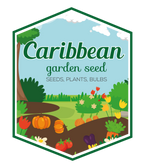
Wild Mint Seeds (MENTHA ARVENSIS)
FAST & FREE SHIPPING
Over 90% of our orders are processed and ship out by next business day.
We are currently processing and shipping most orders within 1-3 business days. (backorders not included) Due to high demand during the peak months of January to May, orders may require additional time for packaging /shipment.
Free shipping for orders over $54.95. Excludes live plants, fresh products And Stackable Black Plastic Nursery Crate
Shipping and handling charges will cover outbound freight and packaging materials. Fees are applicable to all orders, based on total order value pre-tax. Expedited services can be selected at Checkout with extra fees.
- Free shipping to lower 48 states on orders $54.95+
- (Most Items), excluding live plants, plant bulbs, and black plastic nursery crate.
- Safe Seed Pledge
- Satisfaction Guaranteed
- Select your desired size and/or color from the available options.
a.K.a Field Mint, Corn mint,aromatic perennial -Mentha arvensis - Wild mint -Lamiaceae (Mint Family)
One of the few native mints, this aromatic perennial has glands containing essential oils, and the leaves are used as flavorings in sauces, jellies, and beverages. The genus name Mentha comes from Mintho, mistress of Pluto, ruler of Hades. His jealous queen, Proserpine, upon learning of Mintho, trampled her, transforming her into a lowly plant forever to be walked upon. Pluto made this horrible fate more tolerable by willing that the more the plant was trampled, the sweeter it would smell. The 4-lobed and nearly symmetrical clusters of flowers along the stem distinguish this so-called true mint from many others that have flowers in slender spikes at the stem tips or in upper axils.
Sowing: Sow in Spring, Feb to May or in Autumn, Sept to Oct.
Sow seed thinly on the surface of lightly firmed, moistened seed compost in pots or trays. (fine seed, so best done by using seedspoons or adding the seed to a small amount of sand). Press the seeds lightly into the compost. Keep moist and out of the sun, watering from below. Easy to germinate, usually 14 to 21 days at 20°C (68°F)
Resist the urge to prick out or transplant until seedlings have 4 or 5 true leaves. Transplant seedlings into 15cm (6in) pots to grow on.
Gradually acclimatise to outdoor conditions for 10 to 15 days before planting out after all risk of frost. Place in full sun or part shade and plant 30cm (12in) apart or in 30cm 12in containers. Pinch out the tip of the main stem to encourage bushy growth
Cultivation:
The preference is full or partial sun and moist to slightly dry conditions. They don’t need rich soil, but try to keep the soil lightly moist through the first half of summer. (Established plants are very tolerant of late-summer drought.) Division in spring.
Harvesting:
Pick the leaves as required. Gather tops and leaves when flowers bloom and dry for later herb use. Best used fresh but dry very well for those pick-me-up winter teas.
Culinary uses:
Mountain-mint is edible and medicinal, use raw or cooked, the flower buds and leaves have a spicy, mint-like flavour that makes a great spice or seasoning for meat.
Medicinal Uses:
The fresh or dried leaves are brewed into a refreshing mint-like medicinal herb tea that is alterative (for that run down feeling), analgesic, antiseptic, diaphoretic, carminative, emmenagogue and tonic. The tea is used in alternative medicine in the treatment of indigestion, mouth sores and gum disease, colic, coughs, colds, chills and fevers. A strong decoction is medicinal poured over wounds. Crushed flowers are placed on tooth ache and almost instantly kills pain.
Very aromatic, the herb is used in potpourri or burned as incense. Placed in a muslin bag it can be used as bath additive, and is said to be very soothing to irritated skin.
It will freshen laundry when used in the dryer. Thrown in a drawer or trunk it will not only freshen clothing and blankets, but keep moths away. Sprinkle on carpets to freshen the whole house
Natural Insecticide:
Many people grow mountain mint for use as an insect repellent. Crushed flowers are rubbed on clothing repel insects. Rub a handful of this herb on your pants or use a fresh wad of mountain mint’s bruised stems, stuck into your pocket or hat, to help keep gnats from buzzing your face when you’re outdoors.
HOW TO GROW GUIDE
LET OUR CUSTOMER SPEAK FOR US

![[Seeds] - Caribbeangardenseed](http://caribbeangardenseed.com/cdn/shop/files/gift-card-gift-card-1_1024x1024_dfa857db-9150-4315-a362-7f0bb3fb9c47_60x28.png?v=1722895789)









